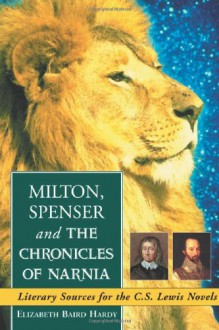Milton, Spenser and the Chronicles of Narnia: Literary Sources for the C.S. Lewis Novels
In 1950, Clive Staples Lewis published the first in a series of children's stories that became The Chronicles of Narnia. The now vastly popular Chronicles are a widely known testament to the religious and moral principles that Lewis embraced in his later life. What many readers and viewers do not...
show more
In 1950, Clive Staples Lewis published the first in a series of children's stories that became The Chronicles of Narnia. The now vastly popular Chronicles are a widely known testament to the religious and moral principles that Lewis embraced in his later life. What many readers and viewers do not know about the Chronicles is that a close reading of the seven-book series reveals the strikingly effective influences of literary sources as diverse as George MacDonald's fantastic fiction and the courtly love poetry of the High Middle Ages. Arguably the two most influential sources for the series are Edmund Spenser's The Faerie Queen and John Milton's Paradise Lost. Lewis was so personally intrigued by these two particular pieces of literature that he became renowned for his scholarly studies of both Milton and Spenser. This book examines the important ways in which Lewis so clearly echoes The Faerie Queen and Paradise Lost, and how the elements of each work together to convey similar meanings. Most specifically, the chapters focus on the telling interweavings that can be seen in the depiction of evil, female characters, fantastic and symbolic landscapes and settings, and the spiritual concepts so personally important to C.S. Lewis.
show less
Format: paperback
ISBN:
9780786428762 (0786428767)
Publish date: December 13th 2006
Publisher: McFarland & Company
Pages no: 188
Edition language: English

